The Canary Islands are a group of Spanish-owned islands situated in southern Europe, around 62 miles west off the southern border of Morocco in Africa. The main islands which make up the archipelago are Fuerteventura, Tenerife, Gran Canaria, La Gomera, La Palma, Lanzarote, and El Hierro, with a number of islets – such as Roque del Oeste, Montaña Clara and Isla de Lobos – also making up part of the archipelago.
The largest islands – Tenerife, Gran Canaria, Fuerteventura and Lanzarote – are the most populated by residents who flock from all corners of the globe to enjoy the almost never-ending sunshine and the laid-back lifestyle that the islands are known for. These four islands are also the most popular with international visitors who are attracted by the wealth of natural attractions, manmade tourist hotspots, stunning beaches and delicious cuisine.
The smallest islands – La Palma, La Gomera and El Hierro – are mainly home to a limited number of Canarians who grew up on the islands and love them too much to leave. Although you won’t find any sophisticated cocktail bars or world-class tourist attractions on these islands, they do have their own list of enchanting charms which makes them definitely worthy of a visit if you’ve got the time.
Canary Island History : Shrouded in Legends and Mythology
The history of the Canary Islands dates way back – so far back that the time of the discovery of the islands can’t be pinpointed to an exact year. Although no one knows when they were first found, we do know that they were written about in ancient times. Plato, who lived between 428 and 348 BC spoke about Atlantis in one of his dialogues, describing it as a continent sunk so far down into the ocean floor that only the peaks of its highest mountains could be seen above the water. During the centuries after Plato’s death, followers who were convinced that Atlantis was a real place and not just an abstract representation still stand by their statement today that Macronesia (made up of the Canary Islands, the Azores, Cape Verde and Maderia) are in fact the visible remains of Atlantis.
The legend of Atlantis isn’t the only one that involves the Canary Islands. It’s said that one of the 12 labors of Hercules was to travel to the end of the world and bring back some golden apples which were guarded by the Hesperides – the daughters of Hesperies and Atlas. Atlas is a Titan in Roman and Greek mythology who, legend states, gave his name to the Atlas mountain ranges in Morocco, as well as the Atlantic Ocean. According to the tale, Hercules traveled beyond the Pillars of Hercules, today known as the Strait of Gibraltar, to reach the idyllic home of the daughters and get the apples, after which he returned home. Over the years, many intellectuals have agreed that the Canary Islands are the only place in the world which could possibly fit the paradisaical description of the place from which the apples were taken.
Definitive History
Whilst the legends and myths might seem appealing and intriguing, there is no clear-cut proof that they’re true. And although the exact origins and discovery of the islands are up for debate, there are a great number of facts about the history of the Canary Islands that we know to be genuine.
The Canaries never had any indigenous people of their own, but carbon dating reveals that peopled lived on the island as far back as 200BC. Historians are strongly in agreement that the first people to live on the islands came from Maghrib – an area which today covers the space between Tunisia and Morocco.
The first written record of people traveling to the Canary Islands is from the 14th century, when the Genoese captain Lanzarotto came upon the island which he later named after himself – Lanzarote. After his visit, the islands were set upon by people searching for the Río de Oro, as well as missionaries eager to spread the word of God. In 1341, an Italian-led and Portuguese-backed expedition saw 2-3 sailing ships travel around the Canaries, documenting each and every tiny piece of land which literally helped put the Canary Islands on the map.
During the 1400s, a huge amount of attempted takeovers, treachery and bloodshed took place throughout the islands, with invaders from all across Europe trying to get the Canary Islands under their control. On the bright side, the 15th century wasn’t all bad – in 1492, Christopher Columbus called on the archipelago numerous times en route to the Americas, heavily increasing transatlantic trade for the islands.
In 1797, one of the most infamous battles of the Canary Islands took place in Santa Cruz de Tenerife. Always told as the biased story of “How Nelson lost his arm” in Tenerife, this piece of history began when the British navy launched an assault on Tenerife’s capital – Santa Cruz. As the British forces approached Tenerife’s coastline, the Spanish were prepared and proceeded to fire their cannons – one of which hit Admiral Nelson in the arm which resulted in the need to have it amputated. The British continued to try and fight their way onto the island and although the Spanish were more than doubly outnumbered, they successfully fought off the invaders.
Today, the Canary Islands are owned by the Spanish government and are split between two capitals – Santa Cruz in Tenerife and Las Palmas in Gran Canaria. In addition to the local Canarios, the islands are mainly home to people from mainland Spain, Portugal, the UK, Italy, France, Germany and Russia who immigrated in search of a better way of life.
Best Things to See and Do
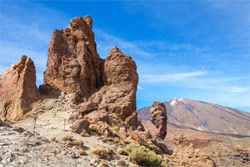
What makes the Canary Islands so appealing to many visitors is the perfect combination of beautiful natural attractions which date back thousands of years and exciting manmade features which are being developed constantly. With certain parts of the islands catering for young groups, others for families with children and others still for older couples, the Canary Islands offer a wealth of things to see and do for everyone.
Whilst it’s impossible to experience everything the Canary Islands have to offer within a 14-day vacation, we’ve put together a selection of the best things to see and do on the islands, so no matter where you are in the archipelago, you’ll never be bored.
In Tenerife
The most popular attraction in not just Tenerife but the whole of the Canary Islands is the Teide National Park. This National Park is a UNESCO World Heritage Site and is home to the third largest volcano in the world and the tallest peak in Spain. Standing tall at 12,198 feet, Mount Teide is surrounded by a barren alien-like landscape with bizarre rock formations which rise out of nowhere and incredible orange-red cliffs. If you visit the Teide National Park on a clear day, make sure you take the cable car to the top of Mount Teide. From the summit you’ll be able to soak up a 360° view which stretches out across the island and over the shimmering waters to the neighboring Canary Islands.
Recently declared the best water park in the world by TripAdvisor, Siam Park in Costa Adeje is one of Tenerife’s biggest and best attractions. This action-packed water park is great fun for the whole family to enjoy and features a fantastic mix of adrenaline-pumping water slides and child-friendly tamer rides. There are also numerous lifeguard-supervised mini water parks for the kids to enjoy, whilst the adults soak up the sun on the stunning Siam Beach.
In Gran Canaria
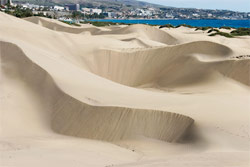
The sand dunes in Gran Canaria are one of the most characteristic aspects of the island and are a must-see during your visit. Known locally as the Dunes of Maspalomas, this protected area of outstanding beauty is like an expansive desert. You could easily forget where you are and think you’d been transported into the middle of the Sahara, if it wasn’t for the twinkling blue ocean which lines the dunes. Whilst you’re more than welcome to chill out and sunbathe on the warm sands, the sand dunes are also regularly used by locals and visitors for sand boarding – think snowboarding, but warmer and sandier.
Palmitos Park is Gran Canaria’s most popular family-friendly attraction, providing hours’ worth of entertainment for visitors of all ages. This subtropical oasis is surrounded by towering palm trees which provide shelter for the 200+ species of birds which call the park home. In addition to the flamingos, macaws, peacocks and toucans, Palmitos Park also features impressive bird shows, gorgeous orchid house, tropical aquarium and the biggest butterfly house in Europe. The money collected from entrance tickets and items bought within the park funds conservation programs which help endangered species.
In Fuerteventura
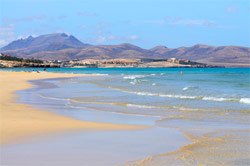
Fuerteventura is where you’ll find the most breathtaking, picture-perfect beaches in the whole of the Canary Islands. Playa Sotavento is located on the south east coast of the island and stretches on for around 17 miles, so you’ll never run out of space to lay down your towel! This beach is made up of soft, golden sands which are lapped by warm, aquamarine just begging to be bathed in. Unfortunately, the regular winds mean that this beach is more suitable for water sports and strolling than sunbathing and relaxing.
If you’re looking for your next adventure, don’t pass up the chance to visit El Llano Cave. Located in Villaverde, this natural lava tube stretches on for 2,126 feet and features a number of fascinating pieces of interest, including genuine fossils and an indigenous spider-like invertebrate that only lives in this one cave. Guided tours through the lava tubes are held several times each day, Tuesday to Saturday.
In Lanzarote
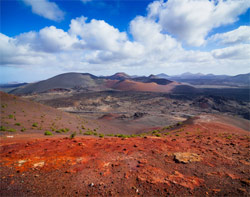
The Timanfaya National Park is one of the most incredible sites in Lanzarote. Here you’ll have the chance to admire the intimidating Fire Mountains which developed almost 300 years ago when a staggering 100 volcanoes erupted simultaneously. In addition to the mountains, the Timanfaya National Park also features extremely rare plant species (some of which you’ll only find on this part of the island) and fascinating mini geysers which spurt steaming jets of water high into the sky.
The almost constant winds which blow across Lanzarote are both a hindrance and a blessing. Although they make for a very unpleasant day of sunbathing, they provide the ideal environment for practicing all sorts of water sports, such as surfing, windsurfing and kitesurfing. If you don’t have your own water sport equipment, you can rent it from the myriad of beachside water sport kiosks and rental stores along the coast of the island.
In La Palma
Whilst each of the Canary Islands produces its own range of enticing wines, none stand up to the unparalleled quality and immense variety that La Palma offers. Each area within the island boasts its own vineyards and own grapes, resulting in a huge choice of wines which are prepared within the island by the locals themselves. These wines can be bought directly from the vineyards and the supermarkets in La Palma, but the best way to experience them is by following a wine tasting route. There are several routes spread out across the island, each of which requires you to hop between bodegas, wine cellars and vineyards, learning about the local wine production process before sampling the wines and then buying a bottle or two of your favorites, if they take your fancy.
In La Gomera
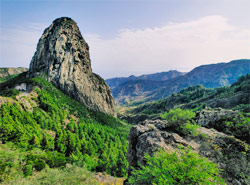
La Gomera is a haven for adventurous walkers eager to explore every nook and cranny that the island has to offer. The island features a great number of walking trails, each off which is of a varying difficulty level and duration, making them suitable for experienced hikers, as well as leisurely ramblers. Whilst some of the shorter, easier walks take in the coastal parts of the island and the charming local villages, the more challenging and rewarding treks take you into the center of the island, amidst the magical laurisilva forests which you’ll swear have been pulled straight out of a fairytale. All the official walks are very well sign-posted, so even if you don’t have a map, you’ll never get lost.
In El Hierro
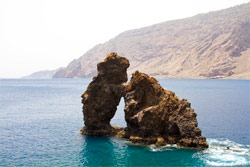
When it comes to snorkeling in the Canary Islands, El Hierro is your best bet. This tiny island offers superb snorkeling opportunities all-year-round, thanks to its ever-warm sea temperatures which rarely dip below 55°F – even in winter. The incredible clarity of the waters around the island means that you’ll be able to see all sorts of exotic marine life, ranging from trumpet fish, black sea bream and globefish to tuna, triggerfish and giant rays. There are plenty of scuba diving schools around the coast of the island where you can rent snorkeling equipment if you haven’t got your own.
It’s no secret that vacations are very personal and we all like something different. So whether your perfect vacation is lazing by the swimming pool, discovering new locations, spending some quality time with your family or something else entirely, the Canary Islands provide everything you could ever need for an amazing getaway that you’ll never forget.






 PASSPORT & VISA PROCESSING
PASSPORT & VISA PROCESSING